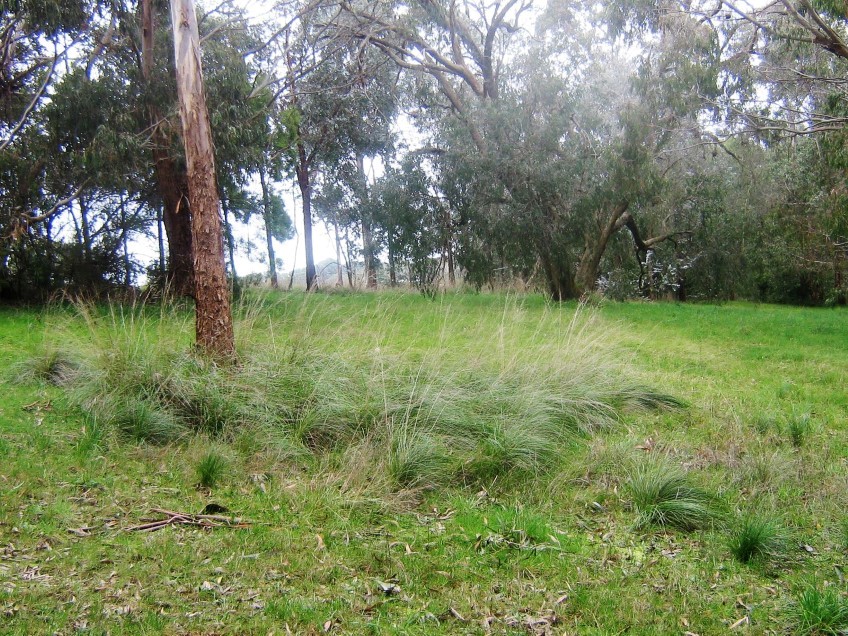
Microlaena stipoides Photo: Linda Ross
A patch of native grass, or a whole lawn of it, will help preserve our beautiful Christmas beetles.
Linda Ross tells how it’s done.
As a child I knew it was Christmas when swarms of brightly-coloured beetles collected at the back screen door. But recently I haven’t seen these beautiful
beetles. They have become increasingly rare as native grasslands around the city fringe disappear. Beetles prefer a mix of native grassland and
eucalypt forest, as was found on Sydney’s Cumberland Plains. Compounding the problems of loss of habitat is the fact that gardeners who find the
c-shaped beetle grubs in the lawn often poison them. The grubs do eat roots of plants and lawns but unless they are in plague proportions they
coexist harmoniously with a garden and gardeners: and a few months later they will turn into beautiful beetles we remember!
Step 1: remove previous lawn and weeds. Dig over the soil so it’s crumbly with no lumps then rake the area flat. A well-prepared seedbed will increase
the chance of germination.
Step 2: buy native seed. Weeping grass, Microlaena stipoides, is the best choice if you want to create a normal-looking lawn as it can be mown and it stays green all year. Weeping grass is fine, soft and produces weeping seed heads from December to May. It has a high drought tolerance, high frost tolerance and is also shade tolerant. Weeping grass will also grow in strongly acidic soils. A 50gm packet will cover 5 sq metres and costs $20.
Step 3: sow seeds when moisture can be guaranteed to remain around the seed for 3 to 4 weeks after sowing. Sow seeds to a depth of 10mm. Water really
well at first and water regularly during seedling establishment. Irrigation can be removed after grass has established. Be patient, a native lawn
can take longer to establish than an instant one, but will fare better in the long run.
Christmas beetles (Anoplognathus)
These beetles belong to the Scarab family, of which there are more than 3000 species in Australia. They range in size from 15 - 40 mm and are
usually golden brown, though some are green or black. The grub is crescent-shaped with a pale reddish brown head and three pairs of legs. Adult
Christmas beetles emerge through summer and are mostly active at night. They particularly love foraging around Dwarf Apple, Angophora hispida,
which may be your best chance of finding them this summer.
Where to buy
Native Seeds Pty Ltd
(03) 9555 1722
www.nativeseeds.com.au
Text: Linda Ross